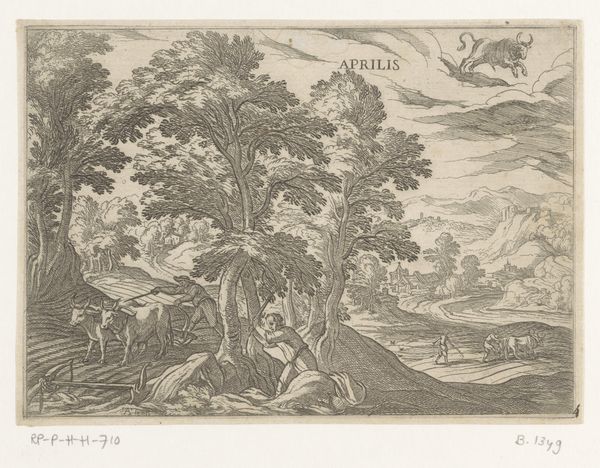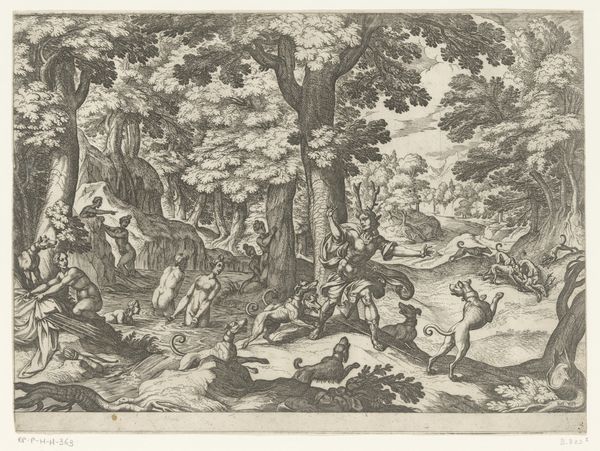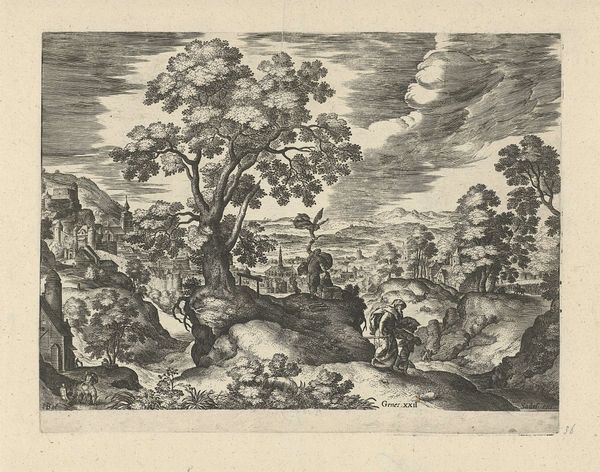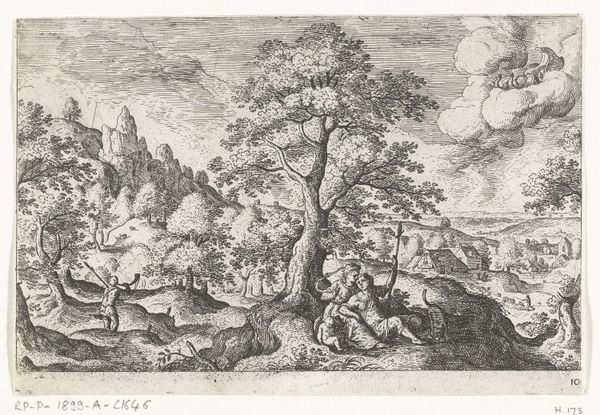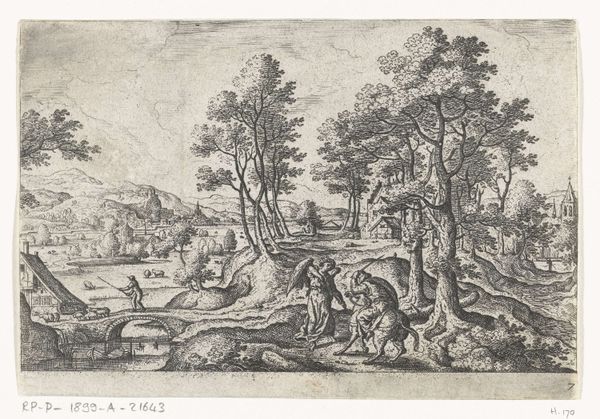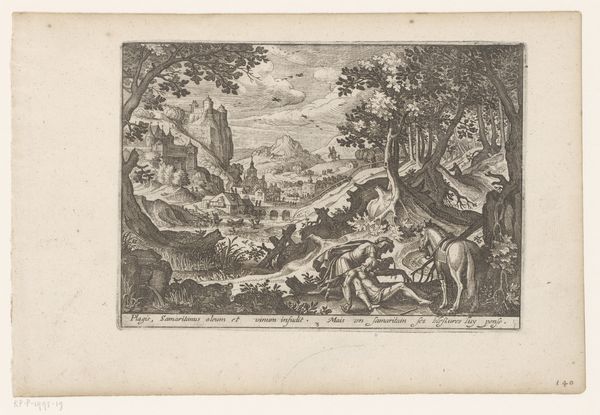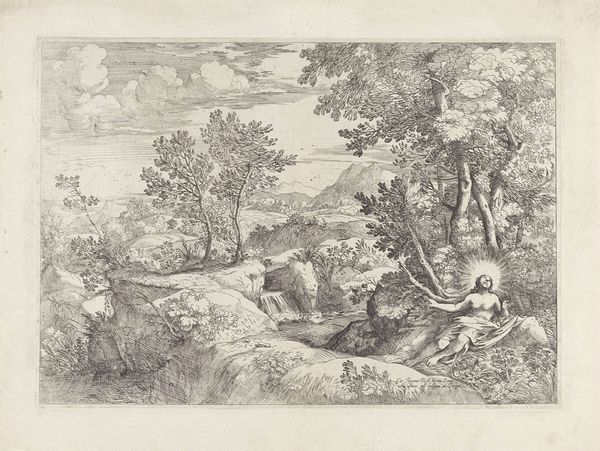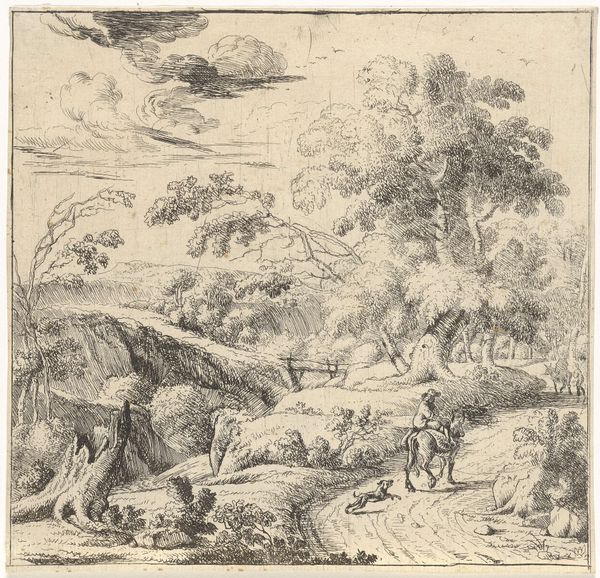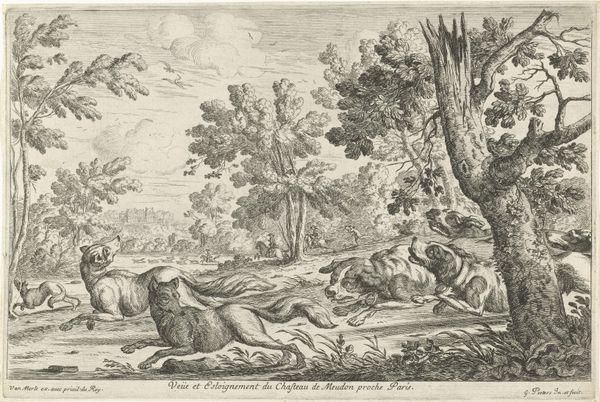
print, intaglio, engraving
#
pen drawing
# print
#
intaglio
#
old engraving style
#
landscape
#
genre-painting
#
history-painting
#
italian-renaissance
#
engraving
Dimensions: height 128 mm, width 180 mm
Copyright: Rijks Museum: Open Domain
Editor: Here we have Antonio Tempesta's "Mei: jacht (tweelingen)", created sometime between 1575 and 1613. It's an intaglio print depicting a hunting scene in a detailed landscape. There’s something almost dreamlike about the scene with those figures in the clouds… how do you interpret this work? Curator: This engraving presents a layered symbolism deeply rooted in Renaissance imagery. Firstly, note the positioning of Gemini – 'tweelingen' meaning twins – presiding over the month of May, Maius in Latin. They represent duality, partnership, and perhaps the balance between earthly pursuits and celestial influence. The hunt itself, a common aristocratic pastime, becomes more than just a depiction of leisure. Editor: What do you mean by that? Curator: Well, consider how the hunt throughout history often serves as a metaphor for life's pursuits, a chasing after goals. Tempesta doesn't simply depict men and dogs chasing prey, but a structured, ritualistic engagement with nature that was loaded with societal meaning. And consider those figures watching from the side; what's their role in the unfolding drama? Editor: They seem removed somehow. Almost like observers…or maybe judges? Is that landscape symbolic too? Curator: Precisely. The receding landscape, detailed yet somewhat fantastical, invites us to see this specific hunt as part of a larger world. Renaissance art often uses landscapes to reflect inner states or philosophical concepts. What feeling do you get from it? Editor: A sense of order imposed on nature. A blend of action and observation. Thanks, I never considered the hunt in such a symbolic light before. Curator: Nor had I, before analyzing it with you. These enduring symbols shape our understanding, don’t they?
Comments
No comments
Be the first to comment and join the conversation on the ultimate creative platform.
